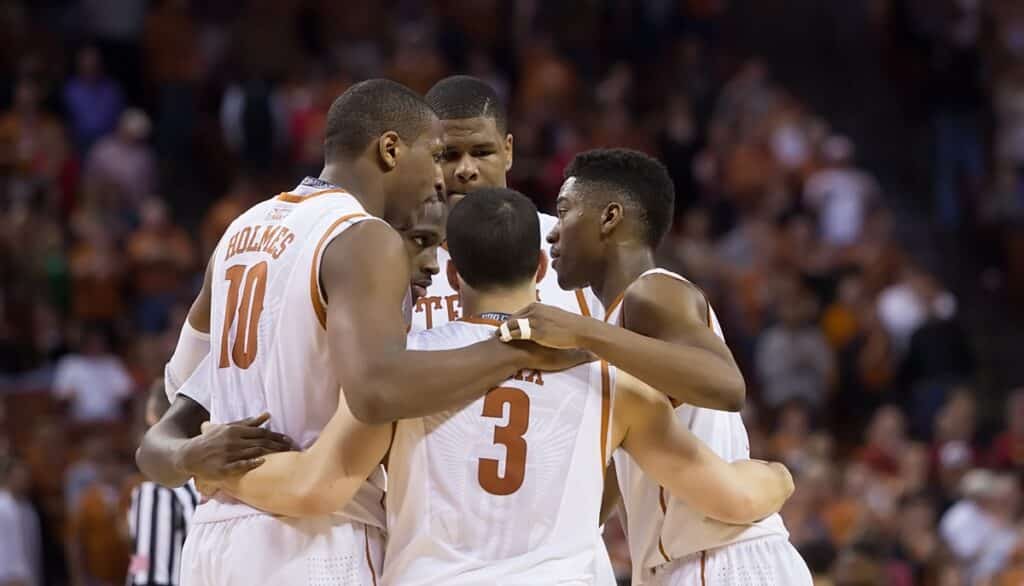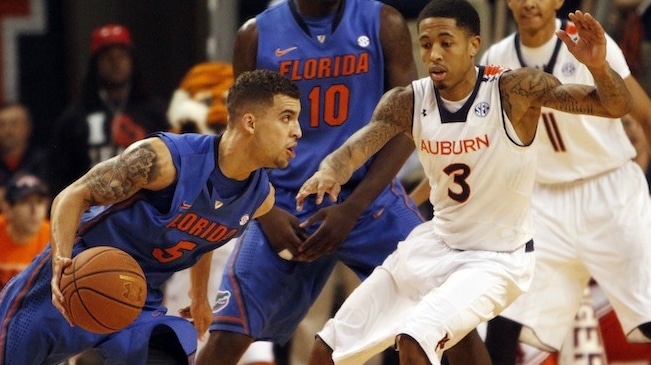
Basketball Team Defense Drills for Better Cohesion: Getting Your Team to Work Together
Effective team defense in basketball hinges on strong communication, coordination, and cohesive movement among players. The ability to function as a unit, covering gaps, rotating efficiently, and communicating during defensive possessions, can be the difference between winning and losing.
Incorporating specific basketball drills into practice can significantly enhance a team’s ability to work together defensively.
Here are several team defense drills designed to improve defensive cohesion and overall effectiveness.

1. Shell Drill
Brief Description:
The Shell Drill is a staple for teaching defensive positioning and concepts such as help defense, rotations, and communication. It is essential for teams looking to work on defensive fundamentals in a structured setting.
Instructions for Practicing this Exercise:
- Divide players into two groups: offensive and defensive. The defensive team sets up in a basic defensive stance around the key.
- The offensive team passes the ball around the perimeter while the defensive team shifts, rotates, and communicates to maintain proper positioning.
- Defenders must practice closing out on shooters, providing help defense, and communicating when screens are set.
- After a set number of passes or a specific time period, switch roles between offensive and defensive teams.
Tips:
- Tip #1: Encourage defenders to stay low, with active hands, and always be ready to move.
- Tip #2: Emphasize vocal communication to ensure everyone knows their role and position at all times.

2. Close-Out Drill
Brief Description:
The Close-Out Drill focuses on teaching defenders how to quickly close the gap on a shooter while maintaining balance and not overcommitting. This basketball drill helps players defend the perimeter without fouling or giving up an easy drive.
Instructions for Practicing this Exercise:
- Set up a line of defenders at the baseline and position an offensive player on the perimeter (at the three-point line or beyond).
- A basketball coach or teammate passes the ball to the offensive player. The defender sprints to close out on the shooter.
- The defender must close out with proper footwork, hands up to contest the shot, and a low stance to prevent a blow-by drive.
- Rotate players through the basketball team drill, giving each defender a chance to close out.
Tips:
- Tip #1: Ensure that defenders approach the shooter with controlled speed—fast enough to contest, but under control to avoid fouling.
- Tip #2: Focus on balance—defenders should be able to react to a shot or a drive without getting caught off guard.
3. Defensive Slide Drill
Brief Description:
This drill improves lateral quickness and defensive positioning by having players perform defensive slides across the court. It’s a fundamental basketball drill for teaching how to stay in front of offensive players.
Instructions for Practicing this Exercise:
- Set up cones or markers along a straight line across the court.
- Players start at one end and perform defensive slides between the cones, focusing on maintaining a low stance, active hands, and proper foot positioning.
- Players should not cross their feet and must keep their body in a balanced position.
- Once they reach the end of the line, they can perform a sprint or continue sliding in the opposite direction.
Tips:
- Tip #1: Ensure players stay low in their defensive stance and avoid standing up during the slide.
- Tip #2: Focus on controlled slides, emphasizing staying in front of the offensive player without reaching or lunging.

4. 2-on-2 Defensive Drill
Brief Description:
This drill focuses on improving team defense by forcing two defenders to work together to stop two offensive players. It enhances communication, defensive switching, and helping principles.
Instructions for Practicing this Exercise:
- Set up two offensive players and two defenders in a half-court setting.
- The offensive players run basic offensive movements, such as screens or cuts, while the defenders communicate to stay in front of their assignments.
- Emphasize switching, help defense, and communication between the defenders as they guard the offensive players.
- Rotate roles after several possessions.
Tips:
- Tip #1: Make sure defenders talk throughout the drill—communication is key to managing screens and switches.
- Tip #2: Encourage defenders to trust their teammates and focus on team concepts like help-side defense rather than individual effort alone.
5. Full-Court Press Drill
Brief Description:
The Full-Court Press Drill teaches basketball players how to apply pressure defense over the full length of the court, forcing turnovers and creating chaos for the offense. It also enhances teamwork and conditioning.
Instructions for Practicing this Exercise:
- Divide players into two teams—one for offense and one for defense. The defensive team applies a full-court press.
- The offensive team attempts to advance the ball up the court, while the defensive team pressures the ball-handler and looks for opportunities to trap or steal the ball.
- Rotate players so that everyone has a chance to play both offense and defense.
- Emphasize trapping, defensive rotation, and creating turnover opportunities.
Tips:
- Tip #1: Focus on high-energy defense and quick decision-making when trapping or forcing turnovers.
- Tip #2: Remind defenders to stay aggressive without fouling, using proper footwork and positioning.

6. Pick-and-Roll Defense Drill
Brief Description:
The Pick-and-Roll Defense Drill teaches players how to defend one of the most common offensive plays in basketball—the pick-and-roll. This basketball drill emphasizes communication and proper defensive rotations.
Instructions for Practicing this Exercise:
- Set up two offensive players—one as the ball-handler and the other as the screener—and two defenders.
- The offensive player with the ball uses the screen, and the defenders work together to stop the pick-and-roll.
- Defenders practice different strategies, such as switching, hedging, or fighting through the screen.
- After a set number of attempts, rotate roles.
Tips:
- Tip #1: Ensure defenders communicate early and loudly to prepare for the screen and avoid confusion.
- Tip #2: Emphasize proper positioning and footwork to prevent easy drives or open shots after the pick.

7. Rotation Drill
Brief Description:
The Rotation Drill teaches defenders how to rotate effectively when the ball moves quickly around the perimeter, helping them maintain proper defensive spacing and prevent open shots.
Instructions for Practicing this Exercise:
- Set up offensive players spaced around the perimeter, with defenders matched up on each player.
- As the offensive team passes the ball, defenders rotate to the new ball handler, maintaining pressure while staying aware of their original assignment.
- Emphasize quick rotations, defensive spacing, and communication between defenders.
- Rotate offensive and defensive roles after several possessions.
Tips:
- Tip #1: Focus on maintaining proper spacing and rotating in sync as the ball moves.
- Tip #2: Ensure that defenders communicate and help each other cover any gaps in the defense.
Basketball Team Defense Drills for Better Cohesion Conclusion
Incorporating these team defense drills into your practice sessions can significantly improve defensive cohesion.
By focusing on communication, positioning, and coordinated movements, teams can enhance their ability to work together defensively.
The result is a more unified and effective defense that can frustrate opponents and create more opportunities for fast breaks and transition offense.



